Why Is My Christmas Cactus Turning Purple? And How To Make It Green Again
If your Christmas cactus leaves are purple or red instead of green, it's telling you that something isn't quite right. Learn the possible causes and solutions.
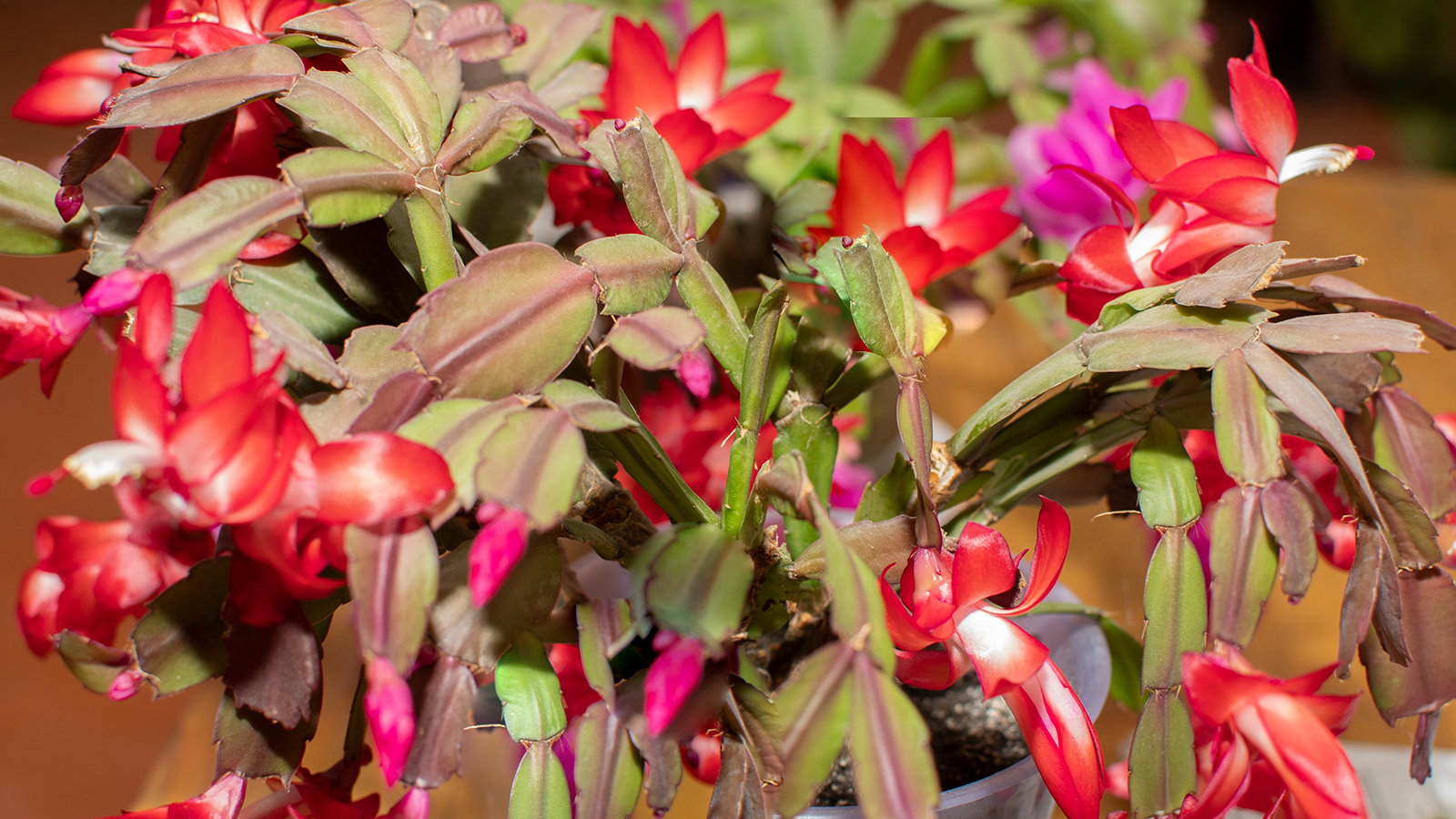
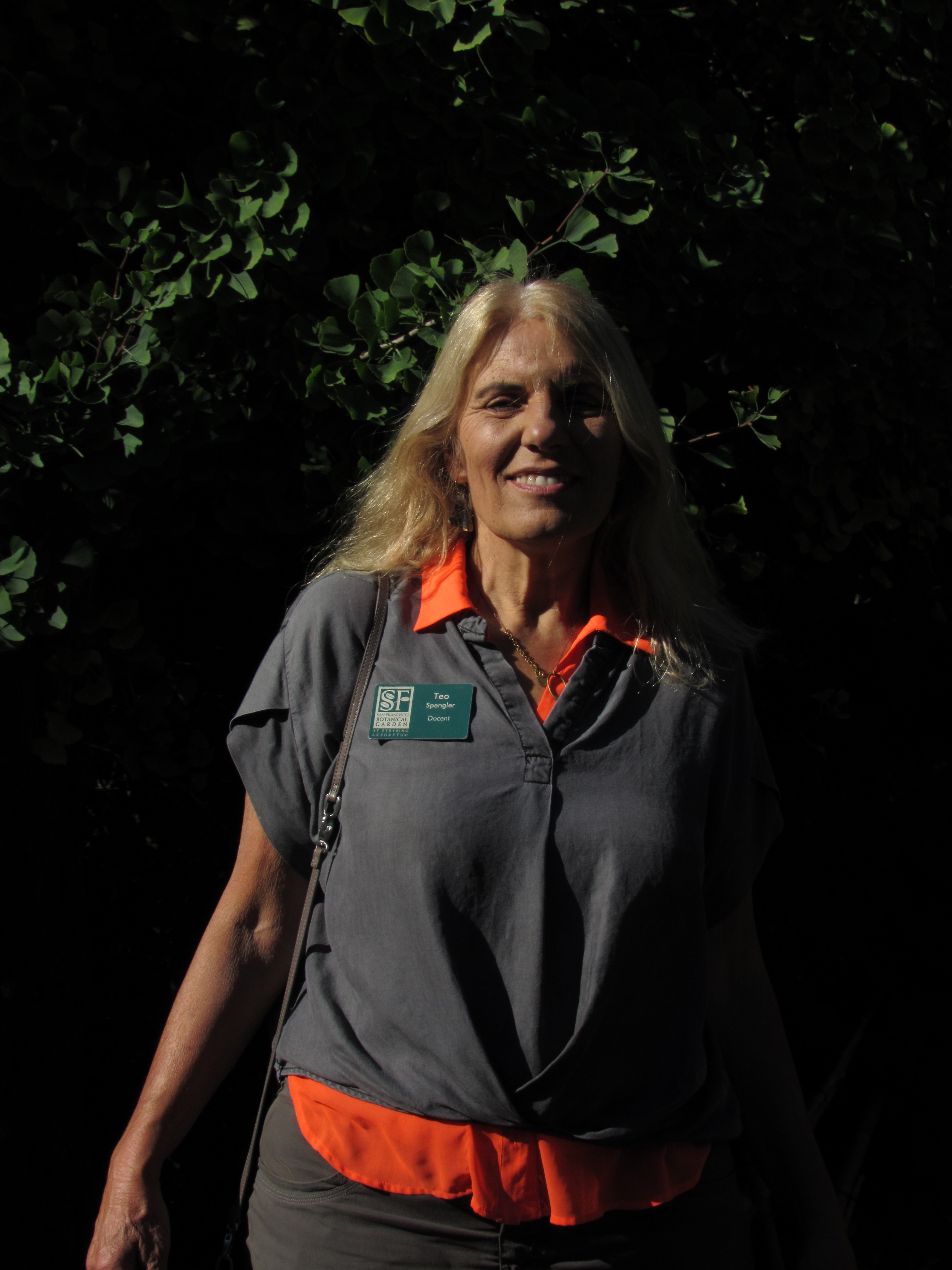
Christmas cacti tend to show up in the stores in November. These succulents, with their segmented green branches and brilliant floral displays, are extremely popular houseplants and they are generally easy to care for. However, if you find yourself asking "Why is my Christmas cactus turning purple?” then your plant is telling you that something isn’t quite right.
Oftentimes, a purplish tint to your Christmas cactus leaves is normal but leaves turning noticeably purple or red can be a symptom of some common Christmas cactus problems. There are more than a few challenges that can result in purple leaves, usually caused by incorrect Christmas cactus care. Solving these issues is also key to making a Christmas cactus bloom.
Read on to learn about possible causes and solutions for reddish-purple Christmas cactus leaves. If you have one of the other types of holiday cactus, then you can also follow this advice, as Thanksgiving cactus care and Easter cactus care are very similar.
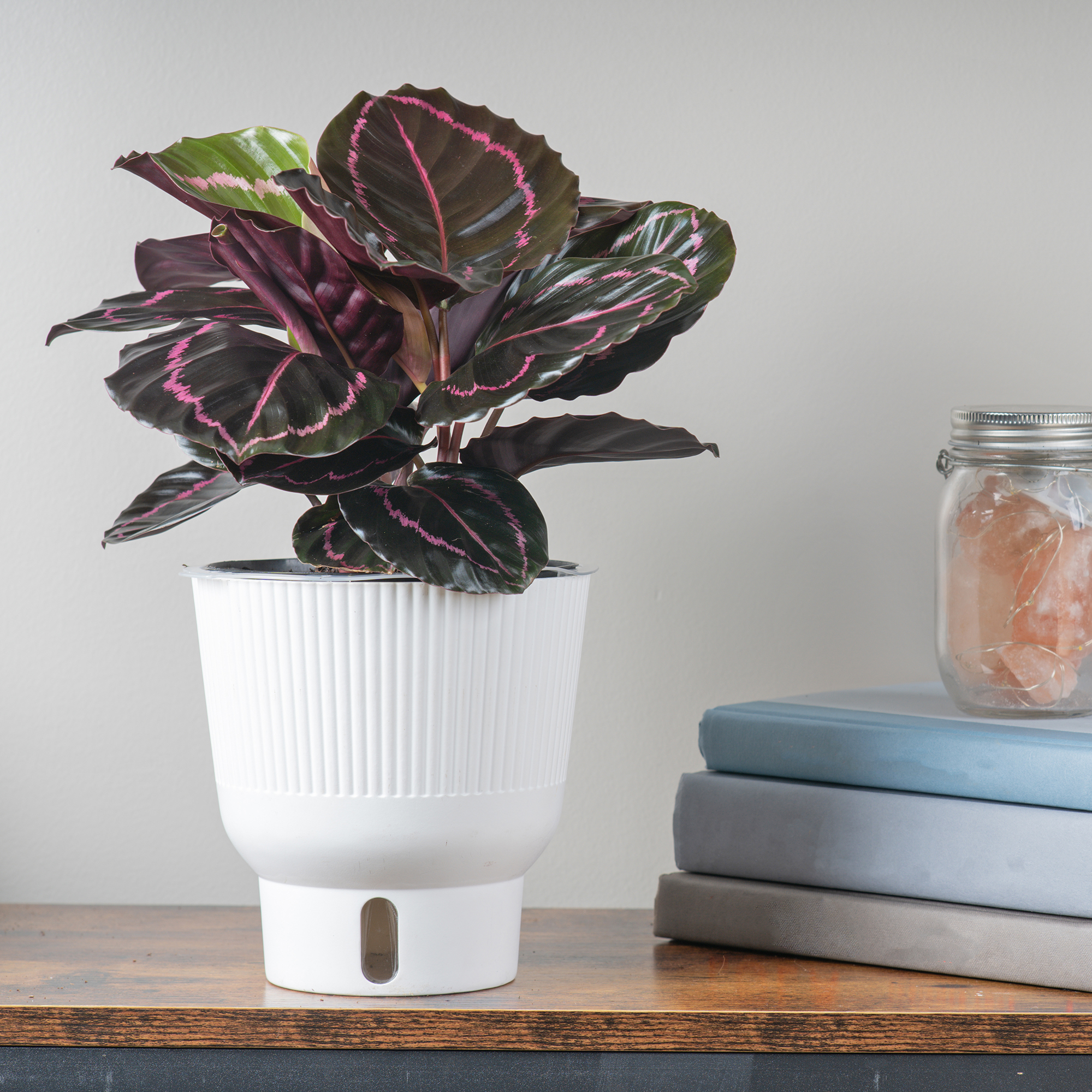
The new Gardening Know How Shop is your go-to destination for all your indoor gardening needs, from rare houseplants to tools and accessories.
Why Is My Christmas Cactus Turning Purple?
A typical Christmas cactus has green foliage and red flowers growing from the tips of the branches. It’s this red/green combination that makes them so appealing as a holiday plant, especially since the flowers appear in late November or December.
However, if you see the segmented branches of your Christmas cactus turning red or purple, it definitely signals a health issue.
So, why is your Christmas cactus turning purple or red? There are more than a few possible reasons, and this reddish or purple tint seems to be the plant’s way of reacting to many different kinds of stress. The three main culprits are:
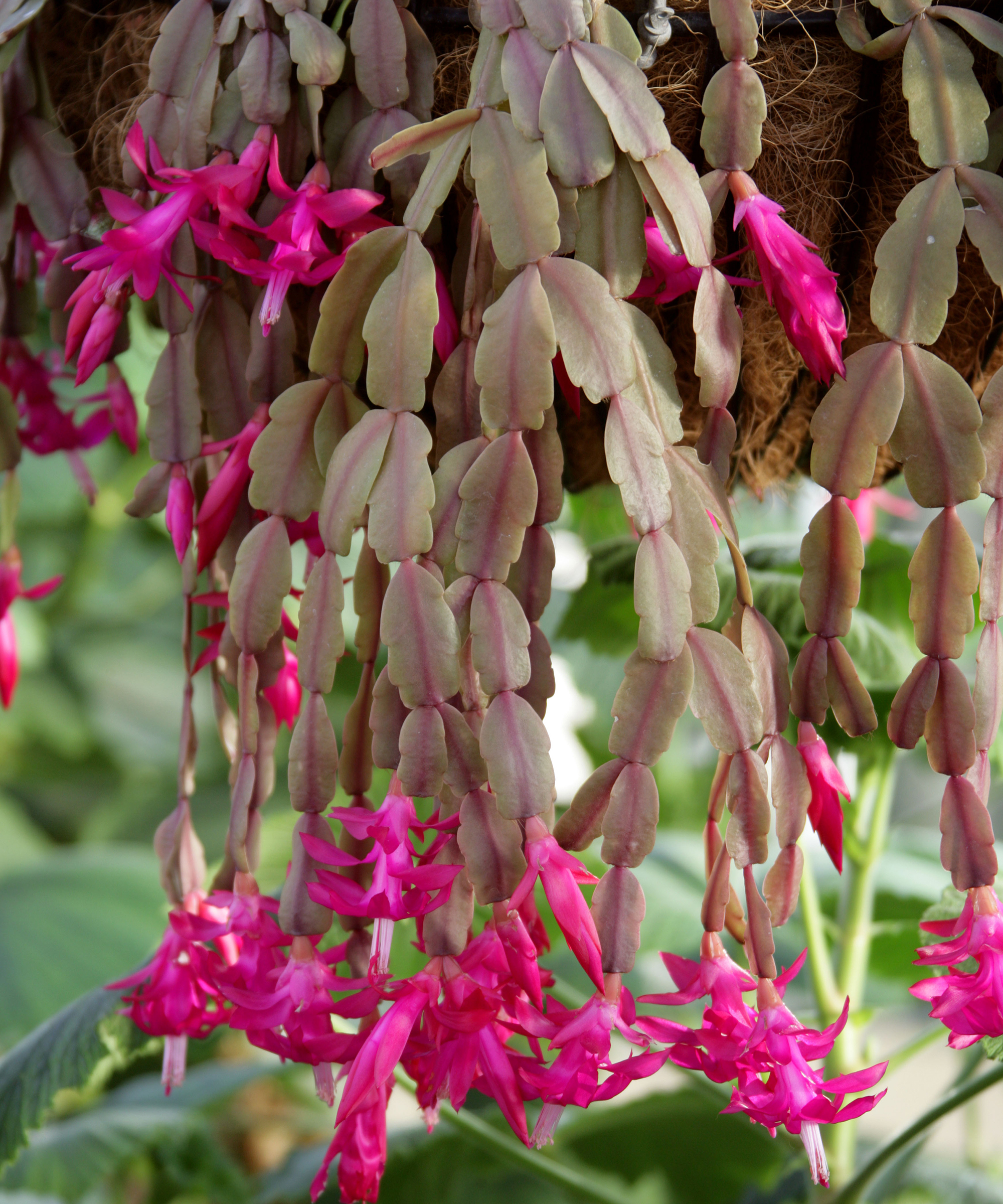
1. Lack of Nutrients
If you don’t fertilize your Christmas cactus regularly, then it may be lacking necessary nutrients. The plants do best when fertilized occasionally during the growing season – between early spring and late summer.
Gardening tips, videos, info and more delivered right to your inbox!
Sign up for the Gardening Know How newsletter today and receive a free copy of our e-book "How to Grow Delicious Tomatoes".
The ideal Christmas cactus fertilizer is a balanced houseplant feed diluted to half-strength. Apply it once per month as part of your Christmas cactus watering regimen.
Additionally, because Christmas cacti require more magnesium than most plants, it can help to provide a supplemental feeding of 1 teaspoon (5ml) of Epsom salts dissolved in one gallon of water. Apply the mixture once every month throughout spring and summer, but don’t use the Epsom salt mixture the same week you apply regular plant fertilizer.
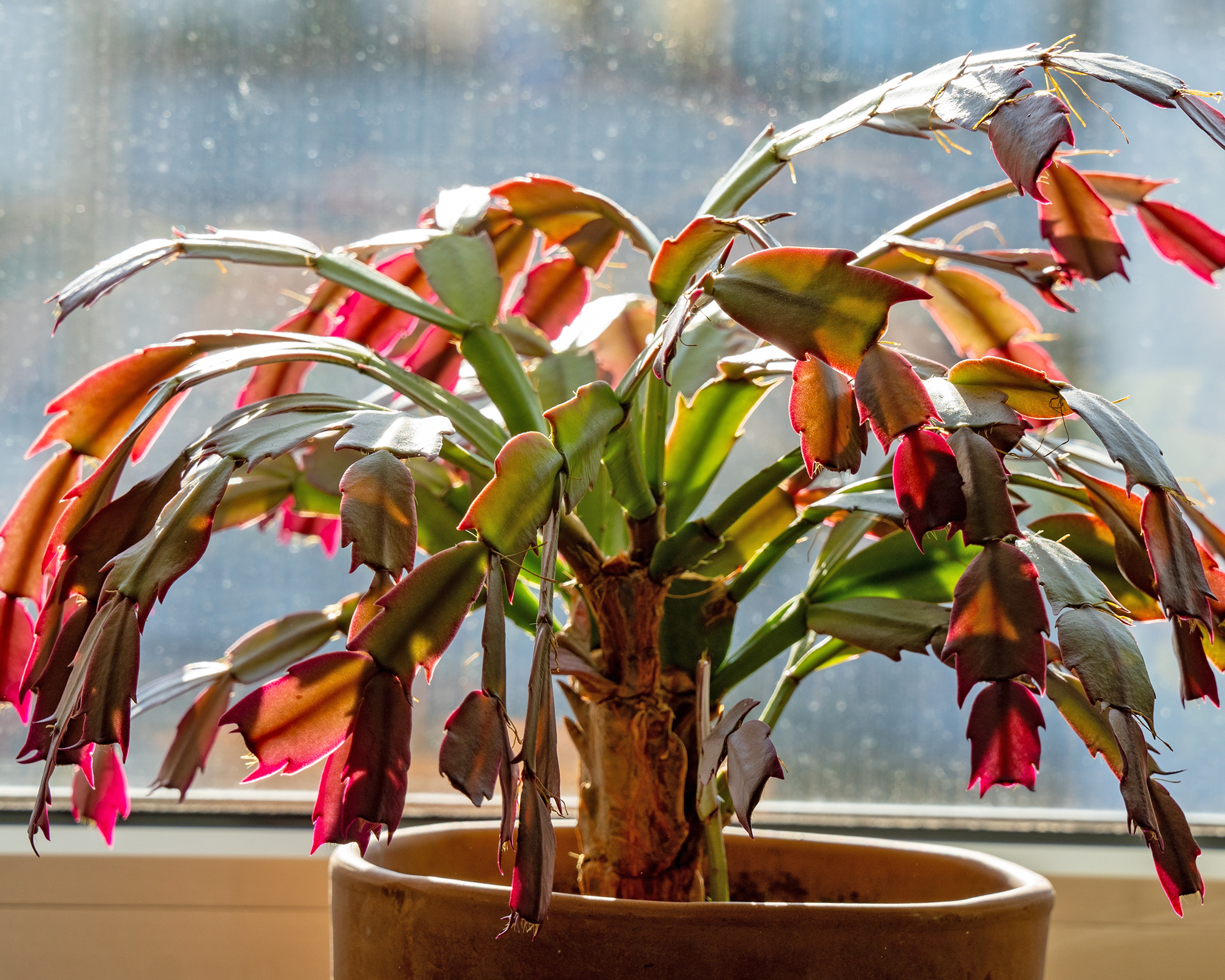
2. Root Issues
Christmas cactus roots like to be fairly crowded, but if they get too packed in, they can lose their ability to upload nutrients and the plant may react by turning purple.
Learn how to repot a Christmas cactus the right way and do it every three or four years, moving it into a container one size larger. Christmas cactus soil should be well-draining, usually with sand, perlite, or vermiculite included in the mix.
When you do repot, take a careful look at the roots while they are exposed to check for tiny round nematode cysts. If there is a heavy infection of these Christmas cactus pests, the plants will become stunted, and the branches turn red-brown.
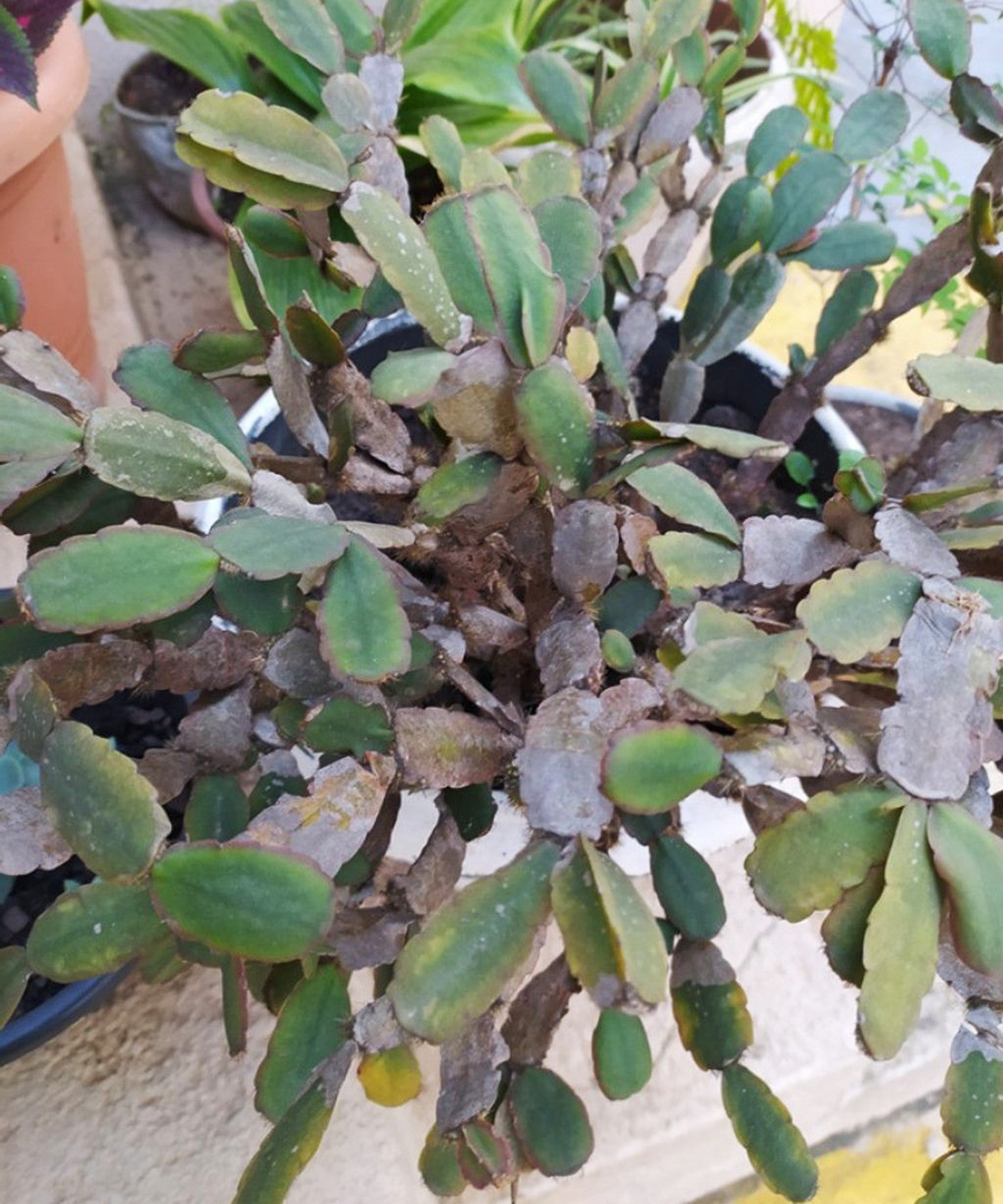
3. Light Issues
Despite their name, Christmas cacti are not desert dwellers that thrive in a hot, dry location. They are epiphyte succulents and thrive in indirect light. If you give them too little light, you may never get blossoms, but too much light, especially direct sunlight, can turn the segmented branches purple. Be especially careful if you move Christmas cactus outside in summer.
Moving the plant to a more appropriate location may prevent sunburn and solve the problem. Be sure the location is away from open doors and drafty windows. Similarly, avoid hot, dry areas such as near a fireplace or heating vent.
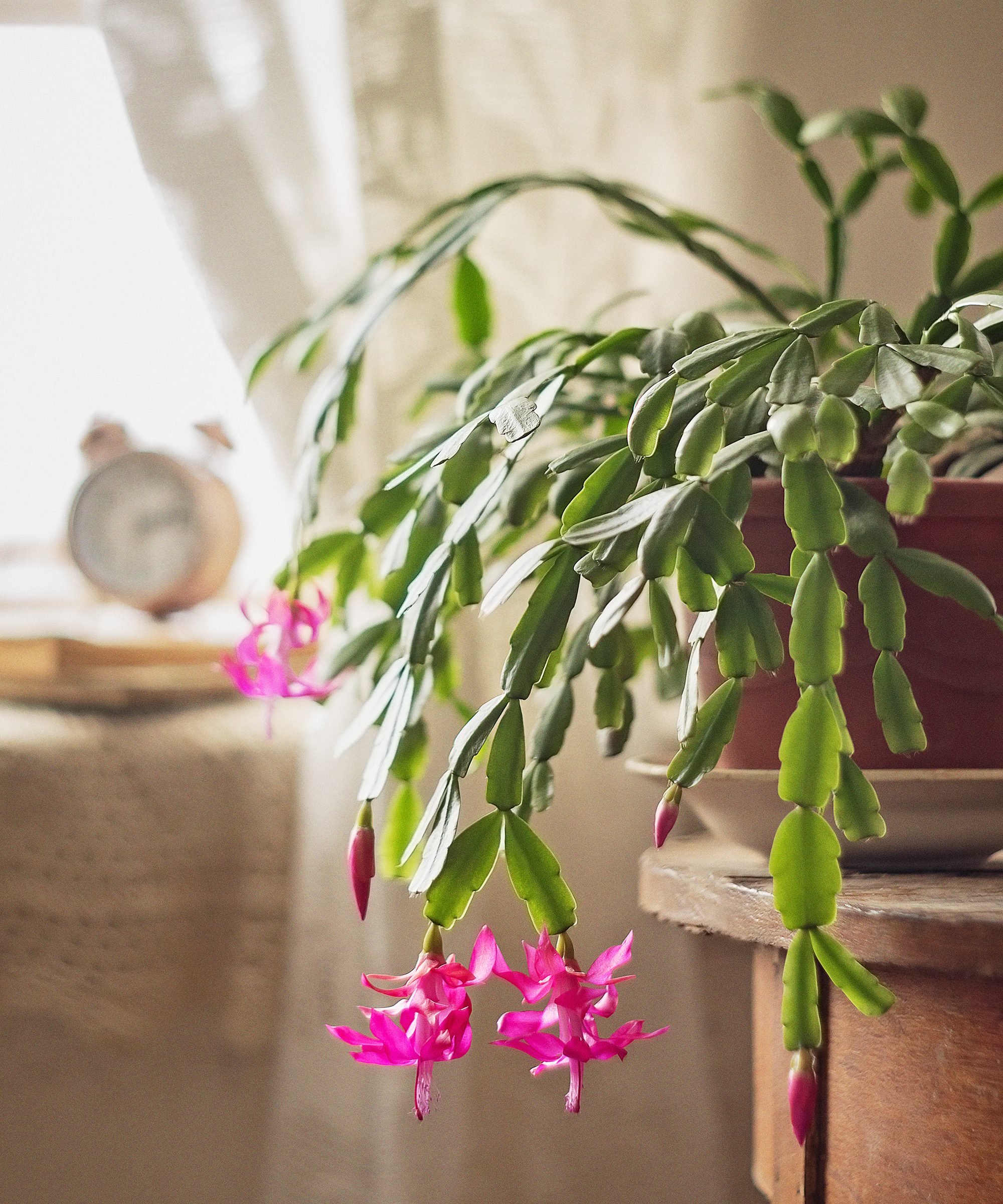
How to Prevent Purple Christmas Cactus Leaves
The principal reasons Christmas cactus foliage turns purple or red are all cultural care matters. You can prevent the purple hue by taking care to provide adequate nutrients, repotting the plant every three or four years, and keeping the cactus out of hot, direct sunlight.
The question of nematode cysts is slightly more complex since nematodes can enter your plant’s life through infected pots, potting soil, or any other plant materials. Buy from a reputable garden store and if you find nematodes in your garden, clean and sterilize all tools before and after you use them.
How to Turn a Christmas Cactus Green Again
It may be possible to return a Christmas cactus to its original green color, but don’t get your hopes up.
You should take every step possible to return your plant to a state of health. If the plant is purple because of inadequate nutrients, start regular fertilizer applications. If the plant is pot-bound, repot it into a slightly larger pot. If it’s been exposed to too much sun or heat, place it in a more appropriate location.
After that, wait and see. Your chances of success are greater if you catch the problem when the coloring first begins to change. Learn how to prune a Christmas cactus, and you can cut away the purple stems once the plant has suitably recovered.
And if the Christmas cactus won’t change back to green, keep in mind that some find the purple stems exotic and interesting.

Teo Spengler is a master gardener and a docent at the San Francisco Botanical Garden, where she hosts public tours. She has studied horticulture and written about nature, trees, plants, and gardening for more than two decades. Her extended family includes some 30 houseplants and hundreds of outdoor plants, including 250 trees, which are her main passion. Spengler currently splits her life between San Francisco and the French Basque Country, though she was raised in Alaska, giving her experience of gardening in a range of climates.
- Mary H. DyerWriter
- Amy DraissDigital Community Manager
-
 7 New & Improved Cultivars Of Old-Fashioned Plants – These Aren’t Your Grandma’s Plants!
7 New & Improved Cultivars Of Old-Fashioned Plants – These Aren’t Your Grandma’s Plants!Old is new again! These old-fashioned plants have new cultivars that are sure to thrive in your garden and bring the charm factor. Neighbors will be envious!
By Mary Ellen Ellis
-
 12 Mother’s Day Garden Gifts That Celebrate Moms Who Love To Grow
12 Mother’s Day Garden Gifts That Celebrate Moms Who Love To GrowAll Moms deserve to feel special on Mother’s Day, so treat her to a thoughtful gardening gift that helps her get the most out of her hobby.
By Melanie Griffiths
-
 Grow ‘Karl Rosenfield’ Peony Plants For The Ultimate Frilly Border Beauties And Cut Flowers
Grow ‘Karl Rosenfield’ Peony Plants For The Ultimate Frilly Border Beauties And Cut FlowersFor frilly double magenta peony petals infused with a heady fragrance, grow ‘Karl Rosenfield’ peony plants. Here’s how to cultivate the ultimate plushy blooms
By Tonya Barnett
-
 ‘Coral Charm’ Peony Care For Sublime Semi-Double Peonies With Lush Salmon Pink Flowers
‘Coral Charm’ Peony Care For Sublime Semi-Double Peonies With Lush Salmon Pink FlowersPeonies are known for their soft baby pink or magenta tones, but if plushy coral blooms are your thing, here’s our guide to the ultimate ‘Coral Charm’ peony care
By Tonya Barnett
-
 Want The Longest Lasting Hydrangea Flowers? Grow These 8 Panicle Hydrangea Varieties
Want The Longest Lasting Hydrangea Flowers? Grow These 8 Panicle Hydrangea VarietiesFor ornamental shrubs that deliver the longest flowering seasons with plush blooms and delicate hues, these panicle hydrangea varieties are essential in your yard
By Tonya Barnett
-
 Can Snake Plants Live Outside? Everything You Need To Know For Snake Plants Al Fresco
Can Snake Plants Live Outside? Everything You Need To Know For Snake Plants Al FrescoSnake plants can live outside given the right conditions, but be careful that they don't take over! Learn the best way to use snake plants in your landscape.
By Mary Ellen Ellis
-
 Zinnias On Repeat: 10 Glorious Cut-And-Come-Again Varieties For Endless Summer Bouquets
Zinnias On Repeat: 10 Glorious Cut-And-Come-Again Varieties For Endless Summer BouquetsThese zinnia varieties keep giving all summer, making them the perfect choice for dedicated cutting gardens – or just the occasional homegrown bouquet.
By Ellen Wells
-
 My Homemade Orchid Fertilizer Always Brings More Blooms – Here's The Easy Recipe That Transforms Plants
My Homemade Orchid Fertilizer Always Brings More Blooms – Here's The Easy Recipe That Transforms PlantsScientist-turned-gardener Mary Ellen Ellis shares her tried-and-tested DIY orchid fertilizer recipe, plus more ingredients to try for healthy, happy plants.
By Mary Ellen Ellis
-
 Orchid Leaves Wrinkled? 5 Common Causes & How To Restore Their Vitality
Orchid Leaves Wrinkled? 5 Common Causes & How To Restore Their VitalityAre your beloved orchid's leaves wrinkled? Worry not! Here are the most common causes for puckered orchid foliage, plus how to plump them back up.
By Tonya Barnett
-
 What Is The Size Of An Azalea? Explore Different Varieties That Will Suit Every Garden
What Is The Size Of An Azalea? Explore Different Varieties That Will Suit Every GardenThe size of azaleas can vary widely because they have been selectively bred for different landscape needs. Check out our picks for each size category.
By Mary Ellen Ellis